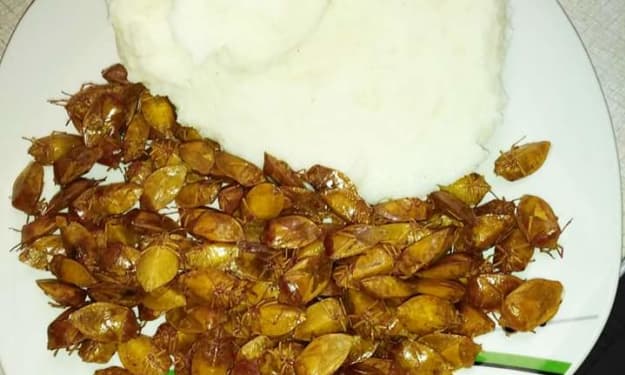4 of The World's Priciest Sea Food
From Crab Claws to Sea Urchins and Eels to Barnacles

While exploring the world's most expensive items, we have unearthed a collection of hidden ocean treasures, ranging from stone crab claws to sea urchins, Japanese eels, and gooseneck barnacles. Join us as we delve into what makes these seafood delicacies so exorbitantly priced.
Let's begin our journey by traveling to an eel farm in Japan to understand why a kilogram of baby eels can fetch around $35,000. These baby eels, known as glass eels, are the most expensive fish in Japan. In January 2018, a kilogram of these tiny creatures cost around $35,000, surpassing the price of bluefin tuna and almost rivaling that of gold at the time. Catching these eels is just the starting point; it takes approximately a year of dedicated effort to nurture them until they grow large enough to be sold. But why are these eels so sought after, and what accounts for their steep price?
Eel consumption has been a culinary tradition in Japan for millennia, and restaurants in the country can sell a staggering 40 to 50 tons of eel each year. The Japanese eel, scientifically known as Anguilla japonica, can be found across East Asia. However, overfishing and changing habitats have led to a significant decline in eel populations. Since 1980, the global catch of eels has plummeted by over 75%, resulting in a substantial impact on their price.
In contrast to conventional fishing practices, the majority of eels are now raised rather than caught as adults. Glass eels, the young eels, are caught in the wild and then nurtured on specialized farms. However, efficiently breeding eels in captivity remains a challenge, so farmers rely on catching young eels to turn a profit. This intensive process demands constant attention and labor.
The cost of eels themselves is just one part of the expense; feeding them is another significant factor. Workers carefully feed the eels a mixture of fish meal, wheat, and soybean meal two to three times a day. After six to twelve months of dedicated work, the eels reach a suitable size for sale. Experienced workers can differentiate the eels' size just by feel, determining where they will be sold.
Certain restaurants, such as Serugaya, have been serving eel dishes for over a century. The high demand for eel delicacies contributes to the inflated prices of young eels. Preparing the final dish, called kabayaki, is an art that takes years to master. Eel is presented in a lacquer box with rice, known as unanju, and its cost can reach up to $91, depending on the price of adult eel. When eel prices soar, restaurants may face challenges in maintaining profitability.
Eel consumption in Japan remains consistent throughout the year, peaking in the summer, and significantly impacting local economies. However, this demand has led to concerns about the endangered status of Japanese eels. As the domestic catch of eels has decreased, the majority of eels consumed in Japan are now imported from China and Taiwan.
Efforts have been made to improve the eel population, including fishing regulations, releasing adult eels back into the water, and researching eel hatching in farms. However, the future of Japanese eels remains uncertain, and the price is likely to continue rising due to the persistent demand.
Another coveted seafood is stone crab claws, known for their premium price. Depending on their size, a pound of these claws at a restaurant can cost as much as $70. However, harvesting these crabs is no easy task, and fishers can only harvest the claws, while the bodies must be returned to the ocean. So, what makes these claws so sought after and expensive?
Stone crabs can only be fished along the southeastern coast of the US, Cuba, the Bahamas, and Mexico, with Florida being the primary location for stone crab catches. These crustaceans command notably higher prices compared to other popular crabs, often costing twice as much as Alaskan snow crab legs. The labor-intensive process of catching them contributes to their high cost.
Fishers drop traps to the ocean floor and leave them for about two weeks before pulling them up with a rope. The claws of an adult crab can exert an enormous pressure of up to 9,000 pounds per square inch, making the plucking process potentially dangerous. Safety measures are essential to avoid injuries.
Stone crabs have the unique ability to regenerate their claws, but strict regulations ensure that only mature claws are harvested, and crabs with undersized claws are returned to the water. Nonetheless, concerns about overfishing and sustainability have prompted the Florida Fish and Wildlife Conservation Commission to implement stricter regulations, such as an increase in the minimum size of harvestable claws and a shorter fishing season.
Despite the increase in regulations, the cost of stone crab claws is not expected to decrease significantly due to the ongoing demand for this delicacy.
Sea urchins are another expensive seafood delicacy that continues to captivate consumers. The valuable part of a sea urchin lies within its spiky shell—its gonads. Just a 200-gram tray of sea urchin gonads can cost a staggering $100, with some varieties in Japan selling for even more.
Sea urchins are hand-harvested by divers, and their population has surged in California's seabeds in recent years. However, despite the seemingly abundant supply, the prices have remained high. The reasons for this can be attributed to the labor-intensive process of hand-harvesting, the specialized skills required, and the consistent demand for this delicacy.
These ocean treasures—Japanese eels, stone crab claws, and sea urchins—are considered some of the world's most expensive seafood items. Their rarity, demand, labor-intensive harvesting techniques, and unique culinary qualities contribute to their hefty price tags. Despite concerns about sustainability, their allure and delicacy status ensure that their prices remain high in the culinary world.
Sea urchin, also known as uni, holds a special place as a prized delicacy in various parts of the world. Nowadays, the yellow-orange gonads of sea urchins are often featured in sushi and even enjoyed straight from the shell. While hundreds of sea urchin species exist, only a select few are sought after for their culinary excellence, such as the red sea urchin found off the coast of Santa Barbara, known as the "California gold." These particular gonads are highly prized for their large, buttery, and sweet flavor, influenced by the kelp they consume.
To obtain these precious gonads, divers like Michael Robertson face the challenge of individually collecting sea urchins by hand. Diving early in the day, they search for kelp-rich areas, which typically indicate better quality urchins. However, the presence of abundant kelp has diminished over time due to various factors, including the growing population of purple sea urchins, a species known to consume large quantities of kelp. This decline in kelp affects the quality and quantity of red sea urchins available for harvest, posing challenges for the divers.
Once gathered, the harvested sea urchins are quickly transported to processors like Gene Dimachi, who meticulously clean and sort the delicate gonads. The grading process involves categorizing them based on color and size. The most exceptional quality, known as the "A+," features bright yellow or orange gonads from the sweeter male urchins, primarily supplied to high-end restaurants.
Sea urchin gonads, or uni, were not always considered a delicacy in the U.S., but the popularity of sushi and the recognition of Santa Barbara's excellent sea urchins in Japan transformed the market. Though faced with challenges in the past decade, such as a lack of kelp and colder waters, there are signs of improvement, offering hope for the future of the red sea urchins and the delicacy they provide.
Moving on to another delicacy, gooseneck barnacles, also known as "persebes," stand out as one of the world's most expensive seafood items. They fetch prices as high as $100 per pound in Spain and Portugal, where they are revered for their lobster-like taste. However, harvesting these barnacles is an incredibly risky and challenging task.
Gooseneck barnacles grow in intertidal zones, and collectors like Stevie Dennis must navigate treacherous waves and limited timeframes during low tide to access and harvest them. The barnacles grow on rocks in areas exposed to harsh conditions, making extraction difficult. Marketable barnacles have specific characteristics, such as a white plate and a certain length of the peduncle (the fleshy stock that holds the meat).
Despite the risks and complexities, the high demand for gooseneck barnacles justifies their premium price. They are a traditional food source for some indigenous communities and are increasingly appearing in high-end restaurants. As the demand grows, so does the potential for a wider market for these prized crustaceans.
In conclusion, sea urchin and gooseneck barnacles are two seafood delicacies that command significant value due to their unique flavors and challenging harvesting methods. Their exclusivity and appeal to gourmet enthusiasts make them highly sought-after, keeping their prices high in the culinary world.





Comments
There are no comments for this story
Be the first to respond and start the conversation.